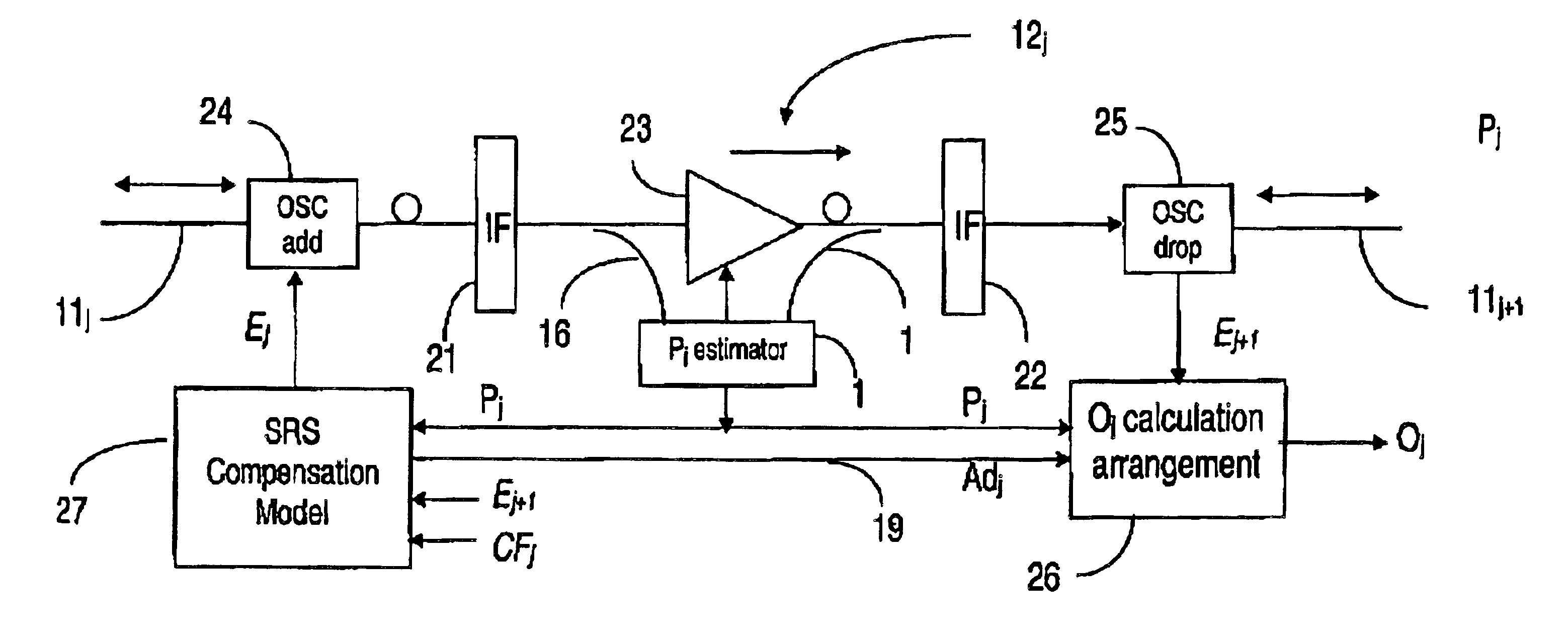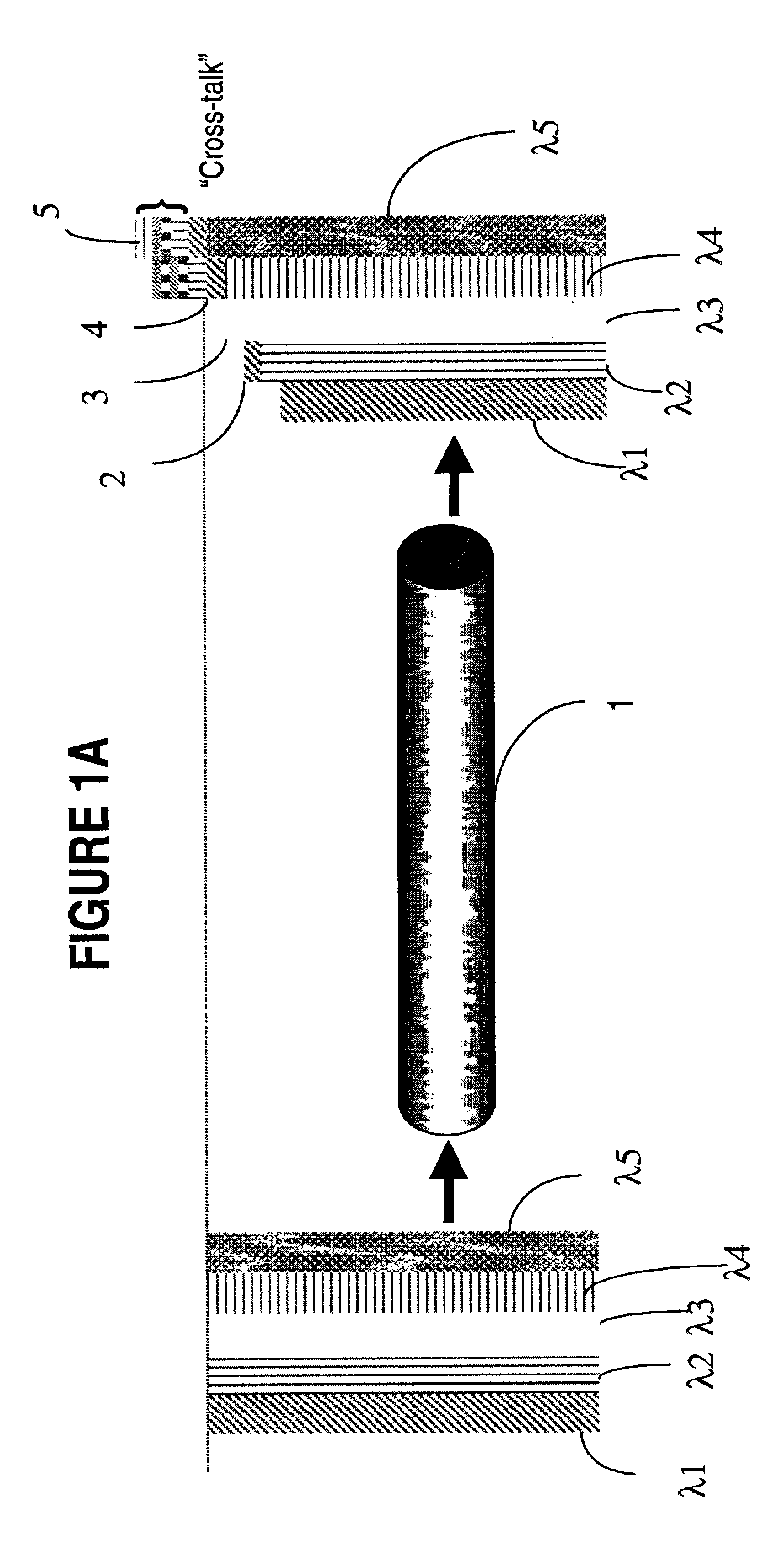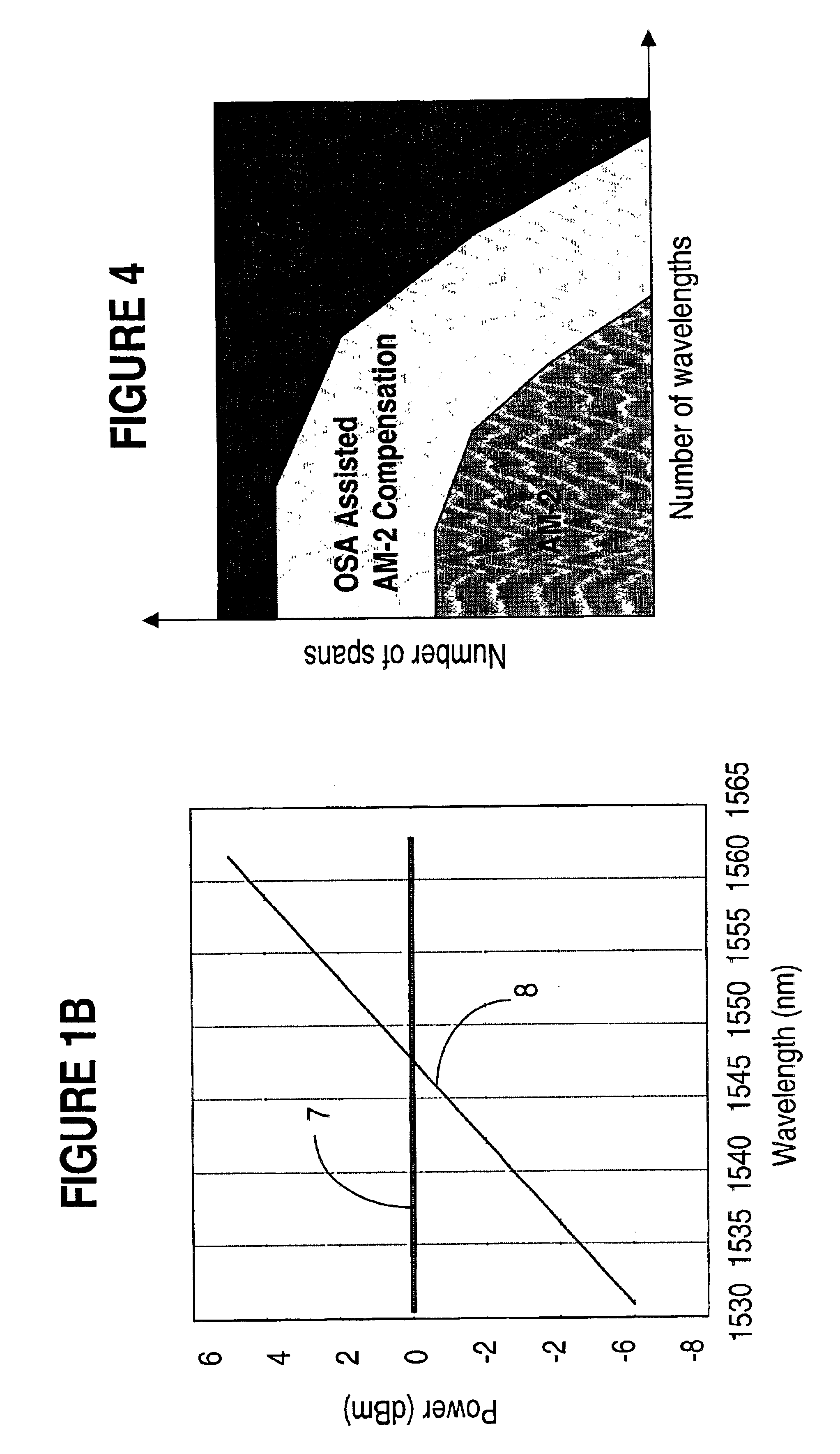Optical performance monitoring for D/WDM networks
a technology of optical performance monitoring and d/wdm network, applied in the field of optical transmission systems, can solve the problems of limited application of this method to high-speed d/wdm network, material scattering becomes an important factor, and the channel cross-talk between d/wdm systems is important, so as to reduce the current power estimation inaccuracy, reduce the sensitivity to system variables, and extend the bandwidth and transmission distance of the communication link.
- Summary
- Abstract
- Description
- Claims
- Application Information
AI Technical Summary
Benefits of technology
Problems solved by technology
Method used
Image
Examples
Embodiment Construction
[0034]FIG. 1A illustrates intuitively how cross-talk between wavelengths occur due to SRS, for a five-channel example. It shows that all channels λ1-λ5 have the same power at the input side of fiber 1, and how power is transferred towards higher frequencies at the output of the fiber 1. Thus, channel λ2 has some information, denoted with 2, transferred through SRS from channel λ1, and channel λ3 carries some information, denoted with 3, transferred from channels λ1 and λ2 through SRS. The information denoted with 4 was transferred on channel λ4 from channels λ1, λ2 and λ3, and the information denoted with 5, was transferred on channel λ5 from channels λ1, λ2, λ3 and λ4.
[0035]It is evident on FIG. 1A that the cross-talk component on the higher wavelengths becomes larger as the number of channels grows. This is also consistent with EQ1.
[0036]FIG. 1B shows the AC and DC power / wavelength transfer functions for a six-span link using non-shifted dispersion fiber (NSDF). The AC transfer fu...
PUM
 Login to View More
Login to View More Abstract
Description
Claims
Application Information
 Login to View More
Login to View More - R&D
- Intellectual Property
- Life Sciences
- Materials
- Tech Scout
- Unparalleled Data Quality
- Higher Quality Content
- 60% Fewer Hallucinations
Browse by: Latest US Patents, China's latest patents, Technical Efficacy Thesaurus, Application Domain, Technology Topic, Popular Technical Reports.
© 2025 PatSnap. All rights reserved.Legal|Privacy policy|Modern Slavery Act Transparency Statement|Sitemap|About US| Contact US: help@patsnap.com



